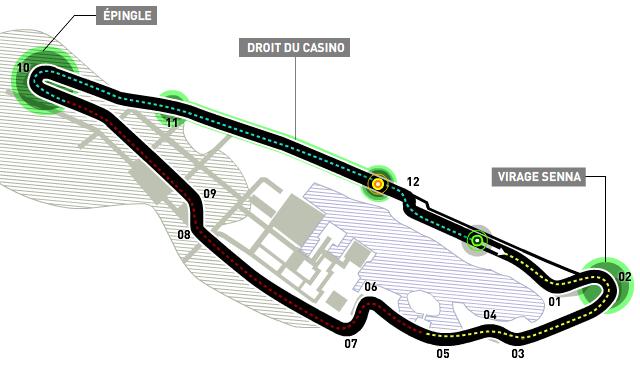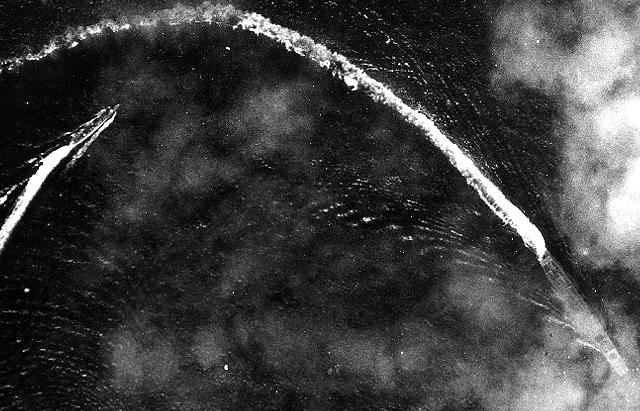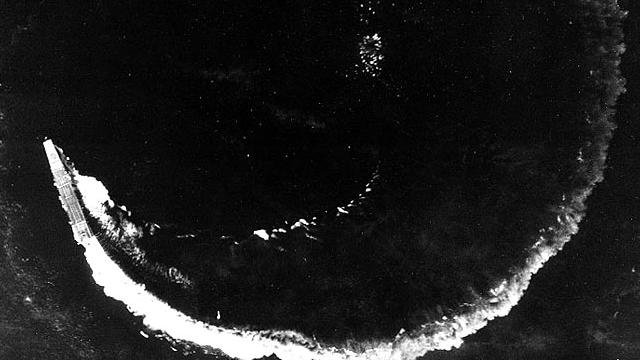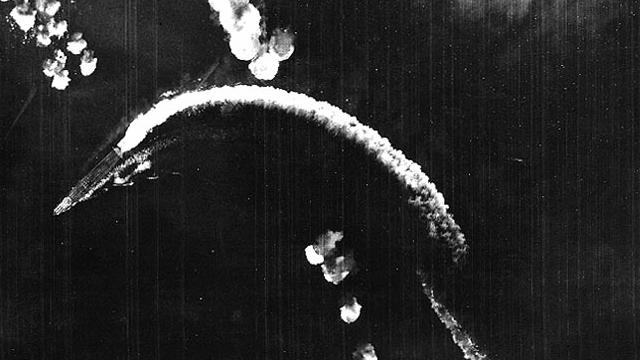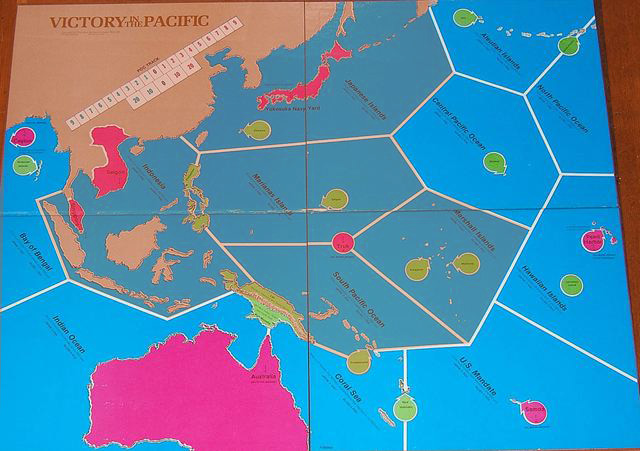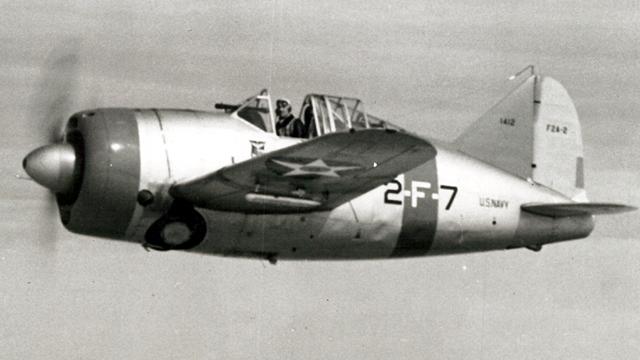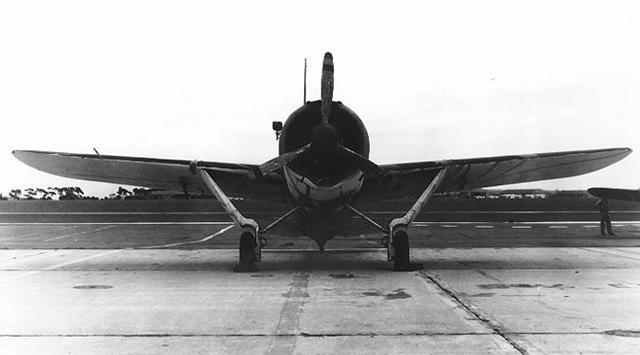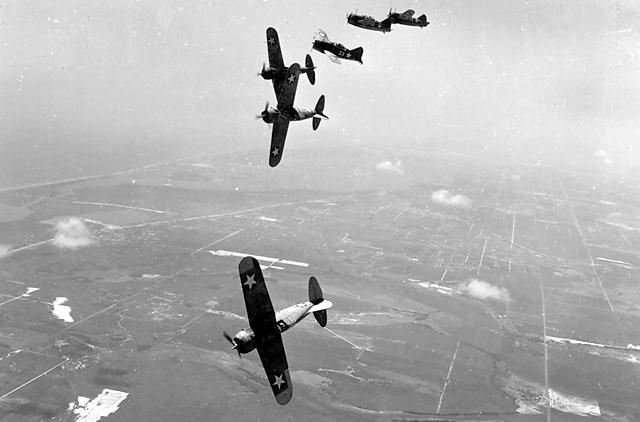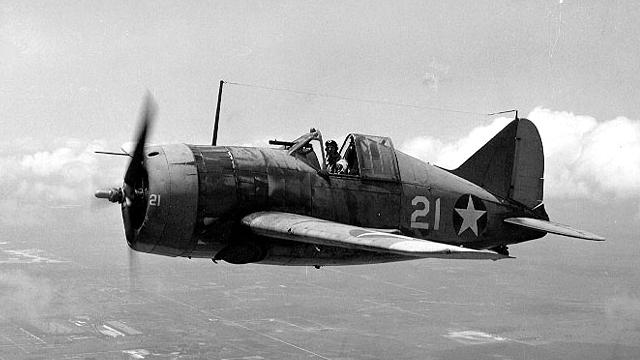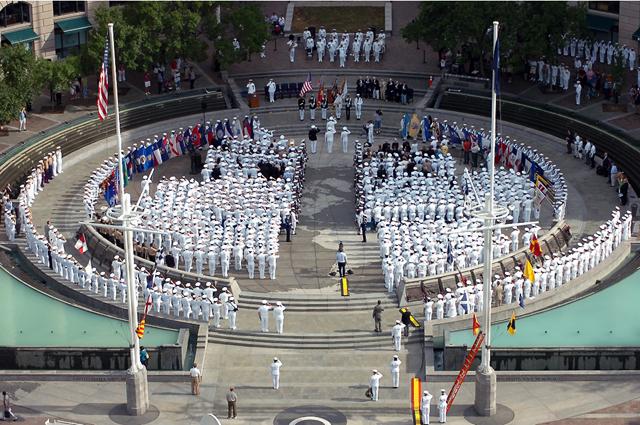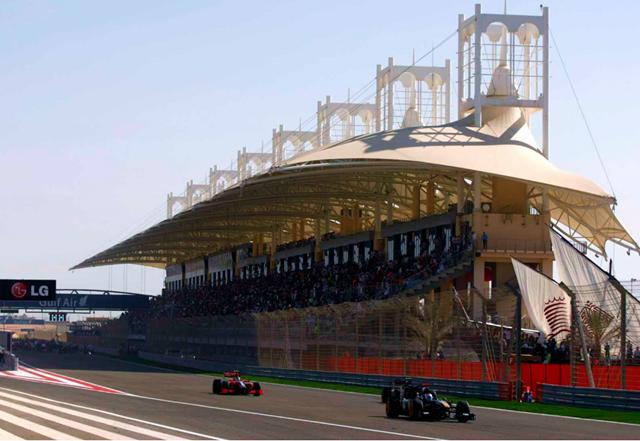A fine question. Indeed, there was a strategic reason for the Japanese to take Midway. However, in my estimation, their reasoning was somewhat... flawed. As the War in the Pacific drew close, the Japanese military knew that they could not realistically go toe-to-toe with the United States for more than a year or so, two years maximum (let that sink in: they started a war they could not win militarily... and knew it). Instead, they intended to win politically, by inflicting such heavy losses on the US and her allies that they'd give up and go for a political settlement. In the political realm, they believed that they'd have a strong case for keeping their conquests (primarily the Indonesia area, with her rubber, tin and oil deposits) and become both self-sufficient and the unquestioned master of Asia.
To do this, the Japanese adopted a strategy that relied on the concept of a defensive perimeter. They figured that if they captured enough island bases, like Wake, Guam, Rabaul, and the Philippines, then improved them to stronghold status so they'd be impossible to re-take, they'd be able to create an impassible border that would keep the Japanese Home Islands secure. Along the way, they'd also attempt to sever the lines of communication between Australia and the US, though that would be more of a bonus than a goal. It's hard to imagine the strategy without looking at a map, so let's use a simplified one: the board for the game
, by Avalon Hill.
This would be the situation going into June, 1942. The shaded zones are controlled by the Japanese, the lighter areas by the US and her allies. The defensive perimeter is starkly evident this way, along with the one weak area in the strategy: there are two open paths directly to the Home Islands. The first is from the "Hawaiian Islands" area directly through the "Central Pacific"; the other, through the "North Pacific" and "Aleutian Island" zones.
Prior to the Doolittle Raid, there was quite a bit of debate in the Japanese military command as to what the next targets would be... in effect, they had been so successful so quickly, they outstripped their own plans. But then the attack using B-25 medium bombers, flying from the deck of the USS
, made clear that the Home Islands were still vulnerable, and the plans to attack Midway and the Aleutians were approved. Capturing those "areas" would prevent any attacks to slip through without being discovered and countered, either via ships sailing from Truk or from Japan proper
There was never any plan to use Midway as a point to launch aerial attacks on Pearl Harbor; even for the incredibly long-legged Japanese aircraft, the 1300 mile flight was too far a distance. Instead, it would be a self-defending base able to send reconnaissance flights out to patrol the waters around it. Just
the Japanese would be able to keep Midway supplied was never really answered; they would figure it out when the time came.
The flaw in this strategy is that the real world isn't a game board with zones of control that prevented enemy movement, yet in effect that's exactly how the Japanese were looking at it. The Pacific Ocean is huge, particularly in the Northern and Central Pacific areas, with vast stretches of open sea where ships could sail without ever being noticed. Indeed, the fleet used in the attack on Pearl Harbor took advantage of this fact on its approach.
The attack on Midway had the goal of sinking the American aircraft carriers, no mistake about it... but defending the Home Islands was the primary goal. That the strategy behind the goal probably wouldn't have worked was apparently never considered.
1
Thanks for the response! I also read that the natural resources in the captured territories were insufficient to make up for the embargo from the US - and the Japanese knew it before they started the war. If true, that meant not only did the Japaneses need for America to give up militarily within a year or two, but they also needed the US to "forgive and forget" and lift the trade embargo...
Posted by: Siergen at June 04, 2011 10:45 PM (FiHIo)
2
I don't know that this was really correct. It's true that they never did get the Indonesian oil fields up to the kind of production they really needed, but that wasn't foreseen before the war.
Their biggest problem was shipping, and not just because of the American submarine blockade. They handled their cargo ships suboptimally, because the Navy insisted on owning some of them and the Army did the same, and they didn't really coordinate their usage. So when the Army sent out ships full of troops and supplies to some region, they came back empty instead of bringing back raw materials. When ships were sent out to get raw materials, they went out empty. They could have substantially increased the efficiency of their cargo shipping if only the Army and Navy were more willing to cooperate.
Posted by: Steven Den Beste at June 05, 2011 01:09 AM (+rSRq)
3
It was not simply a misallocation of shipping. Japan, despite having the third largest merchant fleet in the world in size, and the most modern and efficient in quality, did not have enough shipping under the Japanese flag to handle the traffic needed in peacetime, let alone the higher shipping requirements in war. And this does not include the shipping needed for various campaigns (During the later days of the Guadalcanal campaign, the Imperial Army was pressing for major diversion of merchant shipping to support the campaign, despite being told to their face that such diversions were going cripple the overall war effort.) or the requisition of merchant ships for other purposes (Like conversions to escort carriers, minelayers, auxilary cruisers, etc.).
In fact, at the outbreak of the Pacific War, 60-75% of the Japanese merchant fleet had been requisitioned for direct use by the service or in the opening campaigns, leaving very little support the war effort as a whole. For the tanker fleet, it was >80%. No Allied planner would have dared being stupid enough do something anywhere like that.
Posted by: cxt217 at June 05, 2011 02:56 PM (PKA/z)
4
These discussions are interesting but so narrow as to be misleading.
The entire Midway exercise didn't matter...regardless of outcome. The overall outcome was foreordained by the differential in GDP and the resulting delta in war production. While I have some issue with specific entries, this web site is directionally correct ( http://en.wikipedia.org/wiki/Military_production_during_World_War_II  . The war was decided on the size of the prewar industrial base and the ability to ramp. The military efforts were heroic and certainly helpful, but the outcome was decided in the dull, boring (pick your term) factories of domestic USA. The Japanese didn't have even two years...if not for the forced entry into the European conflict, Japan would have been finished years earlier.
. The war was decided on the size of the prewar industrial base and the ability to ramp. The military efforts were heroic and certainly helpful, but the outcome was decided in the dull, boring (pick your term) factories of domestic USA. The Japanese didn't have even two years...if not for the forced entry into the European conflict, Japan would have been finished years earlier.
Japan could not have been certain of simultaneous entry of the US into the European conflict. Any Japanese planning for a short war absent US involvement in Europe was idiocy even if only public source information was available. Note the 1938-1941 difference in GDP between Japan and the USA. The GDP impact is cumulative.
Even if the US had been pushed back to continental US the outcome would have only been worse for the Japanese. In this case, the wars human impact on the US population would have been quite modest and the resurgent economy (due to war production) would have made it 'easy' to stay the course. Imagine a Japan in 1946 that owned the Pacific but was facing a US with long range bombers, scores of carriers and hundreds of nuclear weapons. The post war period saw the development of 700 nuclear bombs by the end of 1950. Imagine a wartime scale up of the nuclear production! Forget Japanese cities....think of Japanese fleet or forward airbase survival in the face of a single bomb that only had to be somewhat close.
After 60 years we should be able to take a step back and understand what really happened. And what was really important.
Posted by: BobReisner at June 07, 2011 02:29 PM (/ZWI/)
5
Bob, none of those things matter if the people of the rich country, or its leaders, don't have the guts to see the thing through.
The Japanese thought that was the case about the Americans. Even if you outproduce your enemy five to one, it still costs blood to win a war, and the Japanese thought that the Americans wouldn't be willing to shed enough blood to win.
That was their plan: after Pearl Harbor, to take and hold so much territory that the butcher's price of taking it back would be so high that the Americans would give up and make terms.
They weren't the first to make that mistake about America, and they weren't the last.
Posted by: Steven Den Beste at June 07, 2011 02:58 PM (+rSRq)
6
Everyone on the Japanese side thought the US would outproduce and outmass them if and when the Pacific War broke out. Everyone. You can argue they underestimated the production imbalance between the themselves and the US, but that is a different matter.
And barring the more extreme delusionists (Gerhard Weinberg in A World At War make for interesting reading on some of the more grandoise schemes of the Axis.), no Japanese thought it was possible to subjugate the US militarily - though quite a few Japanese recognize the US could do so to Japan.
Those were not the points. The Japanese thought they could wear down the Americans' will to continue fighting, that the Americans, confronted with an invincible Germany on the other side of the world (And YES, the Japanese WERE assuming the Germans would play a role against the US - by knocking Britain and the Soviet Union without Japan having to do anything, if nothing else.) would come to terms with Japan that would leave the Japanese in control of a vastly larger empire.
Posted by: cxt217 at June 08, 2011 08:01 AM (PKA/z)
7
I understand the assumption of foreign states of a lack of resolve by American citizens and an expectation of a US citizen desire to end any conflict early and at any cost. I understand this because I see this assumption being made repeatedly over the centuries. But, I also believe the foundation for these assumptions is not scholarship but simply wishful thinking. Any review of American open source history should have warned them otherwise.
American history from the French & Indian War to modern day is a history of substantial citizen minorities acting with incredible violence over protracted time spans. The American Revolution was a long war that was violent and resulted in a significant number of Americans being exiled from their homeland. Modern warfare (WWI & WW2 style) was created by the American Civil War...violent, industrial, encompassing the whole of society, and with little quarter given. If the Civil War was an example of American brother on brother violence, why would any foreign entity expect that the American reaction to foreign assault would be less violent and with less resolve. It was a very indifferent citizenry that was dragged into WW1. But still a speed and size of mobilization that was shocking even to the 'experienced' European warriors. WW1 was a war without real passion on the part of the American citizen, but American history and politics clearly showed that an aroused citizen minority could hold a grudge for a very long time.
While the Japanese right of passage on to the world stage was the war with Russia, could they not have not noticed the American crushing of a similarly waning power, Spain, with even less effort. Could the Japanese not notice that the Depression crushed America, indifferent to foreign affairs, had the blue water navy that they were most concerned about? In 1931 (Depression well underway), the Navy had 3 Carriers, 12 Battleships, 107 Cruisers/Destroyers, and 56 Submarines. On December 7, 1941: 8 Carriers, 17 Battleships, 222 Cruisers/Destroyers and 112 Submarines. ( http://goo.gl/9KAMi ) A Navy of this scope does not happen overnight, it is an activity that takes generations. And the Navy of late 1941 was a product of an economically distressed country under a great measure of political upheaval. It is worth noting that by late 1943 (only 2 years after Pearl Harbor), the US Navy size was greater than the combined fleets of all other countries on the planet. Was their not a single Japanese analyst in the prewar period who could extrapolate existing shipbuilding capacity (1941) to a war time condition and determine that annual ship production was quickly going to be greater than the total Japanese 1941 fleet size.
In an open society there can be significant minorities that will protest for peace visibly and even irrationally. American history shows that the 'war like' minority always holds sway and, while there can be noise, the ability of the American government to mobilize huge armed forces and the supporting industrial society for long periods and across varying economic conditions is always the case. Perhaps our enemies are distracted by our discordant environment, something that doesn't exist in closed monolithic societies. But it doesn't matter. In matters of life and death, our enemies are under a societal obligation to develop the analytical resources that can see past the noise to the true conditions. They never do and are doomed to make unfounded assumptions that cause their societies to collapse. The information to make a correct assessment about American capacity and 'will' were in the open and available to the Japanese (Yamamoto knew). The "Two Oceans Navy Bill" (July 1940) authorized 1.3MM tons of new warships, the 1939 Industrial Mobilization Plan gave the world notice of massive mobilization, in May 1940 the Office for Emergency Management and National Defense Advisory Commission were created to accelerate war planning, and in January 1941 things really started rolling with the new Office of Production management --- years before open hostilities, the American society was years into a long term commitment to war. All in the open. For anyone to see.
It was over before it started. Midway didn't matter. The Japanese had many better options and would have likely pursued them had they had a rigorous analysis of the American reality, economic and strength of will.
Posted by: BobReisner at June 08, 2011 11:08 AM (/ZWI/)
8
You make a lot of good points, Bob, and we can agree to the preposition that any war started by Germany and Japan against the Allies was ultimately doomed to defeat (Though it was not apparent to all the participants at the time.).
But in many ways, it did not matter. Both the Japanese and the Germans knew that once America entered the war, they would be outproduced - heck, the British outproduced Germany in ships, aircraft, and tanks by themselves. And the Japanese were under no illusions about the possible size of the US Navy after the Two Ocean Navy bill/Stark Plan.
But it was the Japanese' consideration about whether the US had the will to fight them - especially with a victorious and apparently invincible Germany waging war against them at the same time - that represented their thinking. That actually has some validity to it, since as Richard Franks pointed out in Guadalcanal, the Japanese had gotten a pretty sense of the domestic mood within the US in 1930s and 40s, including how the Selective Service was renewed by a margin of a single vote in the House. Any doubts about both American and Western will to fight was shared, in private, by none other than Winston Churchill, following the fall of Singapore and Tobruk. And the willingness of the Japanese to fight and die to literally the last man, and how that would impact American preceptions - that was what the Japanese expected before the war which did cause American concern during the war.
The huge productive advantage the US had is what caused the Japanese to plan on a short, decisive war of conquest before coming to terms with US - similar to how the mighty hosts of her surrounding enemies had caused two generations of the German General Staff to plan for a short, decisive war to knock out their opponents in sequence before they could be fully mobilized and act in concert. Given the Japanese' apprisal of American opinion and the massive increase in US naval strength that was coming, that seemed a workable strategy to them. The fact it was myopic is correct but in many ways, irrelevent.
Posted by: cxt217 at June 08, 2011 10:33 PM (PKA/z)
9
So the japanese believed they would win. What if Japan would never have attacked Pearl Harbor, what if they had left US alone and concentrated on carving a huge empire from China, Soviets and european colonial possessions? Would US have done anything? What could have been the triggering point?
Posted by: Ari at June 09, 2011 01:22 AM (QXAzG)
10
The problem is that Japan wasn't completely independent of the US. They required significant shipments of raw materials, including a lot of scrap steel, in order to keep their economy going.
One of the triggers that prompted Pearl was the suspension of oil and steel exports to Japan in mid- to late 1941, in response to their continued invasion of China. Once they were in that position, they couldn't just coast along as they were; access to oil was absolutely required in order to continue with the military obligations they had and the civilian economy. So they had to get access to oil, and that either meant moving against SE Asia or backing down in China.
It's extremely questionable whether backing down in China was actually an option. Any civilian government that tried it without the military would have immediately been turfed out - the Japanese system required the army and the navy to provide a minister each, and they could undo a government by refusing to do so. On top of that, anyone who advocated such a policy would have been highly likely to be assassinated.
Could Japan JUST have attacked SE Asia without the US? Eh. It's not impossible. But if the US decided to make a point of it, it would have been easy to base the fleet at Manila, and there wasn't any way to run oil tanker convoys past a hostile Philippines. So they ran the risk of being pulled into war under circumstances that would have been much more favorable to the US, while still being at risk of getting fuel-choked at any time.
Posted by: Avatar_exADV at June 09, 2011 12:37 PM (44ahZ)
11
I intend to post a response to Bob tonight. It will come as no surprise that I strongly disagree with his initial statements.
Posted by: Wonderduck at June 09, 2011 12:57 PM (OS+Cr)
12
Avatar: I would argue that a Japan that avoided war with the US and only attacked British and Dutch interest would have gotten away with it, at least for a little while. They had two domestic US factors going for them - the strongly isolationist mood of the US population at the time, and intention of FDR to go to war with Germany first while trying to maintain peace as long as possible with Japan. A US public that saw the Japanese avoid attacking American interests (In the Philippines and elsewhere.) and avoid attacking Pearl Harbor, would not have been in a mood to declare war on a Japan that was overrunning Malaya and the Dutch East Indies.
Furthermore, the Philippines were not logistically prepared for a large American force to be based on - primarily because of its vulnerability to being attacked by the Japanese. The ability of a December 1941 Pacific Fleet to do so was also questionable, given the priorities and allocations of forces to the Atlantic and against Germany - something that frustrated Husband Kimmel and his staff to no end.
Posted by: cxt217 at June 09, 2011 02:23 PM (PKA/z)
13
cxt217 in #12 get's it exactly right. By late 1941, the US had clearly decided that Germany was the opponent of choice. A relatively small island nation that knew it's limitations would have seen a path to real victory as anything other than an attack on the US. A treaty that limited China area conquests to Korea, Manchuria and northern China would have taken 'China' off the table and the American population would have lost total interest. Since France and the Netherlands had been conquered by Germany, Japanese protection in force of these and also German assets in the pacific would have likely been welcomed. Think of Japan assuming the role of a limited regional power that allowed the US and Britain to focus on the European/Mideast/Africa theaters. Japan could have easily positioned itself as an ally. An ally that would have been welcomed and whose activities to 'keep the neighborhood safe' would have been overlooked (think about treatment of Russia). It would have taken generations to integrate the arc from Indonesia to Manchuria into a real East Asia co-prosperity sphere, by 1941 japan had conquered almost all it really needed to be strong for the next 100 years. And it would have had some very appealing post war geopolitical considerations...a strong ally aligned against a weak China (likely communist) and a resurgent Russia. A very different Pacific and maybe a very different world picture with Russia having a heavily militarized Japan on the ground in Asia just below the empty Siberia.
Avatar in #10's point about a base in Manila is a stretch. A fleet would be hard to supply and Manila would be vulnerable to submarine blockage and air attack from Formosa. Plus what cxt217 said in #12. A smart Japan could publicize American attacks on still 'friendly' Japanese shipping and it would be extremely difficult for an America at war with Germany to get popular support for an attack on the Japanese fleet. Again, the only thing Japan had to do was to go out of the way to NEVER declare war on the US and to never engage in a first strike. Germany was at war with Britain for 2 years without the US stepping in as a declared partner of Britain. Yes we defended convoys, took some aggressive actions in the Atlantic and beefed up western hemisphere defense but we did not engage Germany despite provocation. Based on this example, why did Japan think the US would actively engage Japan in defense of Britain in the face of Japanese aggression against British conquests. Just another case of bad analysis and bad thinking.
Again on Avatar #10, I think the issue of US oil and scrap steel export to Japan (or rather lack of export) was not really important. Any war with the US would be the same as the export ban....nothing would come from the US to Japan with a state of war in place.
But Avatar in #10 makes my case exactly when he states the very true statement that NO Japanese government would have survived a China retrenchment or likely any military stand down / stabilization. The combination of an insular society, emperor worship and the blind desire for territorial conquest created the perfect storm to assure that all problems had the same answer of military expansion. Post war documents clearly showed that Japan had no realistic plan to stop and that there was no real post war plan, plan to end hostilities or even to 'integrate' the conquests into a rational economic system. True analysis and realistic selection of realistic options was not possible in the religious and political structure that was Japan. The choices made were to recover from ethnic/societal slights and feed the military desire to acquire territory. What other possible explanation could there be for so many bad strategic decisions. It wasn't random bad luck. Ari's point in #9 is so obvious, how could the smartest people in Japan 1941 missed that train of thought.
The linchpin of the discussion rests on two apparent thoughts about the American people by the Japanese leadership: the Americans didn't have a stomach for a long war and they were too 'soft' to fight a determined enemy. We know that these statements are not true but it is my contention that the Japanese could have determined this in 1941 from a careful reading of public source information and American history. Their (the analysts) desire to support ethnic supremacy, their feeling that other societies were structurally inferior, and that they must provide analysis that supports the predetermined conclusions of the emperor and military caused the Japanese disaster known as WWII. I won't repeat all of the prior points but I want to address some of the examples in #10. A close vote on Selective Service was nothing compared to the draft riots of the civil war (which did not affect the conduct of that war). Again, the American revolution and civil war showed conclusively that Americans would fight each other to the last man! If Andersonville showed how Americans would treat their own, what lesson should Japan have taken away? The American propensity for violence was in every newspaper every day....machine gun toting bank robbers, gangland wars in New York, Chicago and Detroit, UAW and other union organizing activity, veteran pension marches (and the government response), California efforts to restrict 'immigrants' from the mid west, ethnic violence on every group that ever migrated to the US in size (Irish, German, Italian, Jews, Chinese, etc.), and of course White on Black actions. As all of this is compared to the relatively peaceful, very structured, very stable Japanese society, I can only ask: Exactly what information were the Japanese analysts missing? A violent people that could hold grudges across many decades.
I do understand that casual viewing of dissent in American political life (and in America in general) could lead those with limited information and understanding to a conclusion that the American society could not be mobilized for war (despite what happened in the Spanish American War and the BUND rallies in the 30's). I do understand that isolationist marches and vocal 'peace at any price' fringe groups could make an impression of weakness on the ill informed. All white people look and act alike so yes, America should collapse like the French, Poles, Austrians, etc did in the face of German intensity (forgetting that Germans were also 'white'). And Roosevelt and his team didn't know about war and were only interested in the domestic economy. And so on. BUT, the analysts and war planners are not supposed to be casual viewers of limited information. These analysts were expected to be 'the best and brightest'! They should have made the effort to learn and understand. They had 2 decades and no externally imposed resource constraints...one less battleship in a 20 year period would have provided the funds to send hundreds of soon to be senior staffers to the US for a decade to learn about us. Of course, the 'visitors' would be so contaminated by the US that they could never assume a senior analysis position in the Japanese hierarchy!
America is a noisy society with many components wanting isolation and peace at any price. My belief is that America always has a range of opinion and it is a specific vocal minority that carries the day. The guy's with the guns. About 1/3 (an unsupportable guess) of America is deeply 'conservative' and they tend to run the important government agencies (Senate, State, Defense, local governments), banks, industry, religion, and the actual military. While other minorities can have impacts on the edge and minorities overlap, there is a core to the US that has acted in a very predicable way (not necessarily right) since our founding. We see it and others can as well (or should).
It wasn't Midway, just really bad staff work. All the answers were available. There were good choices to be made (from their view). The only impediment was a closed mind. Turns out to have been a pretty big impediment.
Posted by: BobReisner at June 09, 2011 04:35 PM (/ZWI/)
14
Bob, sorry but as much as you have some valid and good points - you are not going to win this argument. Your argument about the Japanese' lack of looking at American history ignores that fact that it was very much the Present America and World of 1940-1941 that was the determining factor in Japan's (And Germany's, to a lesser extent.) decision to go to war, in so far it as the apparent lack of will in Americans to fight a war. The Draft Riots of the Civil War are interesting for a Japanese examining American history - it is also largely irrelevent to determining whether Japan was going to war in 1941. Much, if not most, of the American history you cite as being 'missed' by the Japanese were completely irrelevent to the deliberations at hand.
Also, if we are going to look at American history - how about the fact that Americans previously have seldom enjoy unanimus support in going to war? There are been a large segment in almost every war (Barring WW2 - and that still did not prevent one congresswoman from voting against a declaration of war on Japan.) that believed their fellow Americans were making a grave mistake in going to war against whomever. Sometimes this has led to more active anti-war efforts during the conflict. That would seem to argue that the Japanese assessment of Americans might be correct? Likewise, determining how European countries would react to Germany's invasion of Poland on 1 September 1939, by the using the European history regarding the mood in August 1914 might a tad off.
It is important to read the other guy's history but you have to be careful reading significance into it. Japan's defeat at Midway and in the Pacific War was the outcome of a whole host of factors, some of which no one could anticipate and some which could and should have been anticipated by the people of the time - but your overall position really is not one of them and, in my view, not supportable.
Posted by: cxt217 at June 09, 2011 05:19 PM (PKA/z)
15
Sorry to hear that cxt217 in #14 thinks we are having an arguement....I really do think it is a discussion ;>)
I'm also a poor communicator...most of the comments in #14 I agree with and feel support my point of view!
The Civil War draft riots were brought up as a counterpoint to the comment about the Selective Service Act being passed by a single vote margin and how this shows a reluctant America...that by implication would 'freeze' aggressive action by the government. The riots didn't and a single vote wouldn't. I also think that other countries should look at the long history of a people. Clearly much of France, to pick one example, has been and continues to be influenced by the French revolution, Napoleon, 1870, 1914 and of course WWII. The distant past is important. I believe this is true for most countries European, Asian, etc..and of course the USA.
I'd ask (cxt217) why you think American history in general and my specific references to the violent nature of Americans in the 1930's doesn't serve as an indicator that Americans can be violent (and self organize for violence) and hold grudges for a long period. As well as a multi year defense ramp up being well underway by 1941. cxt217 says "...
how about the fact that Americans previously have seldom enjoy unanimus support in going to war?..." My point exactly! With the possible exception of the Spanish American War (made unanimous by a 'sneak attack'!), the US had a long history of going to War with significant (perhaps majority) dissension. How could the Japanese have missed this?
I'll respond to the third paragraph of #14 in a post on the next thread but my line of discussion is NOT about the Japanese defeat at Midway being "...the outcome of a whole host of factors...". Of course it was. My point was and is that the Battle of Midway, while heroic, was not really important in the outcome of the War. And that with the perspective of 60 years after the fact, we should start to acknowledge this.
(Not having to do with this discussion, the cxt217 comment "... Likewise, determining how European countries would react to Germany's invasion of Poland on 1 September 1939, by the using the European history regarding the mood in August 1914 might a tad off..." seems inappropriate on its face. In 1914 Europe went to war on the basis of an assasination of a single person who wasn't really all that important. So if Europe could go to war over a single death, why not a possibility over a single country? Most historians weren't surprised...the exhaustion of WWI created the anomily of Austria and Czechoslovakia, not the other way around.)
Posted by: BobReisner at June 10, 2011 03:01 PM (/ZWI/)
16
First, I was error when referring to this as an 'argument' the way I did. We are having a discussion - all parties are advancing their arguments (i.e. position.) in the discussion.
The point is that trying to read history as an example what a nation or a people will do later, can be dangerous if you put more significance than the part of history is worth. Yes, America has gone to almost all its wars with large segments of the population dissenting (I would argue even the Spanish-American War qualifies, since there were a number of people, up and including William McKinley, who thought it was very bad idea.) and it has impair but not froze its action. I suppose the Japanese could have read that as warning - but they could also read that any war in 1941 that involved the US would not be whole-heartedly supported by the people, and would have a major segment of the American population seek negotiations and peace as soon as possible, and that the peace movement who not freeze the effort - but it would impair so much that the US government would not able to concentrate its whole attention on the war and would spur the US (Especially faced with an invincible Germany too.) to seek peace with the Japanese.
Note that historically, the US has ended every war prior to 1941 except the Civil War with...a negotiated settlement. And had the stalemate that persisted outside Richmond/Petersburg and Atlanta lasted longer in 1864, we might not have the exception either. That would suggest to a Japanese studying American history that the US would eventually come to the negotiating table with Japan as equals to end the war - after all, Americans always become war weary and want it to end, one or another.
And the build-up of American military power prior to 1941 would have argued for Japan to wage a short, decisive war so everything could be settled before the US could bring its greater production to bear. Actually, that is was brought up by the Japanese in the deliberations on the road to war - and before that as well, because they ALWAYS assumed the US would have the numerical advantage in the correlation of forces and productive capability. And it is strikingly similar to a German General Staff that, understanding their neighbors had the ability to steamroller them when they finished mobilizing and acted in concert, planned to knock them out in sequence before that occurred.
Now, we know the Japanese were concentrating on the Present America and Present World of 1941 when considering going to war with the US. Except for the US military build-up, very little else from American history was relevent to their decision making, though the war weariness/isolationism of the 1920s-1930s was certainly a factor. But even if they did study American history more, it would not have supported your position. No one, least of all me, will argue that past has no effect on the present, behavior or otherwise. But you have to read it with the correct appreciation of its significance.
Finally, my comment about trying to predict the European reaction to the invasion of Poland in 1939 through the lens of a 1914 Europe was actually a callback to an observation by Barbara Tuchman in The Guns of August, where she mentioned that 1914 Europe seemed 'bored of peace' which led them to eagerly marched off to war. You certainly can not say Europe was eager to go to war in 1939 - not even Germany - and thus you can not use that past to explain the present. Those are hardly all the reasons for either war, but it does show that care needs to be taken when examining the events of the present through the filter of the past.
And yes, Midway was important - the Japanese defeat meant the initiative was knocked out of their hands and into the air for anyone to try to grab it. That the Allies only grabbed it when they started the Guadalcanal Campagin does not reduces the importance of Midway.
All other commets will go in Wonderduck's post on the subject.
Posted by: cxt217 at June 10, 2011 08:58 PM (G3oVK)
Hide Comments
| Add Comment
